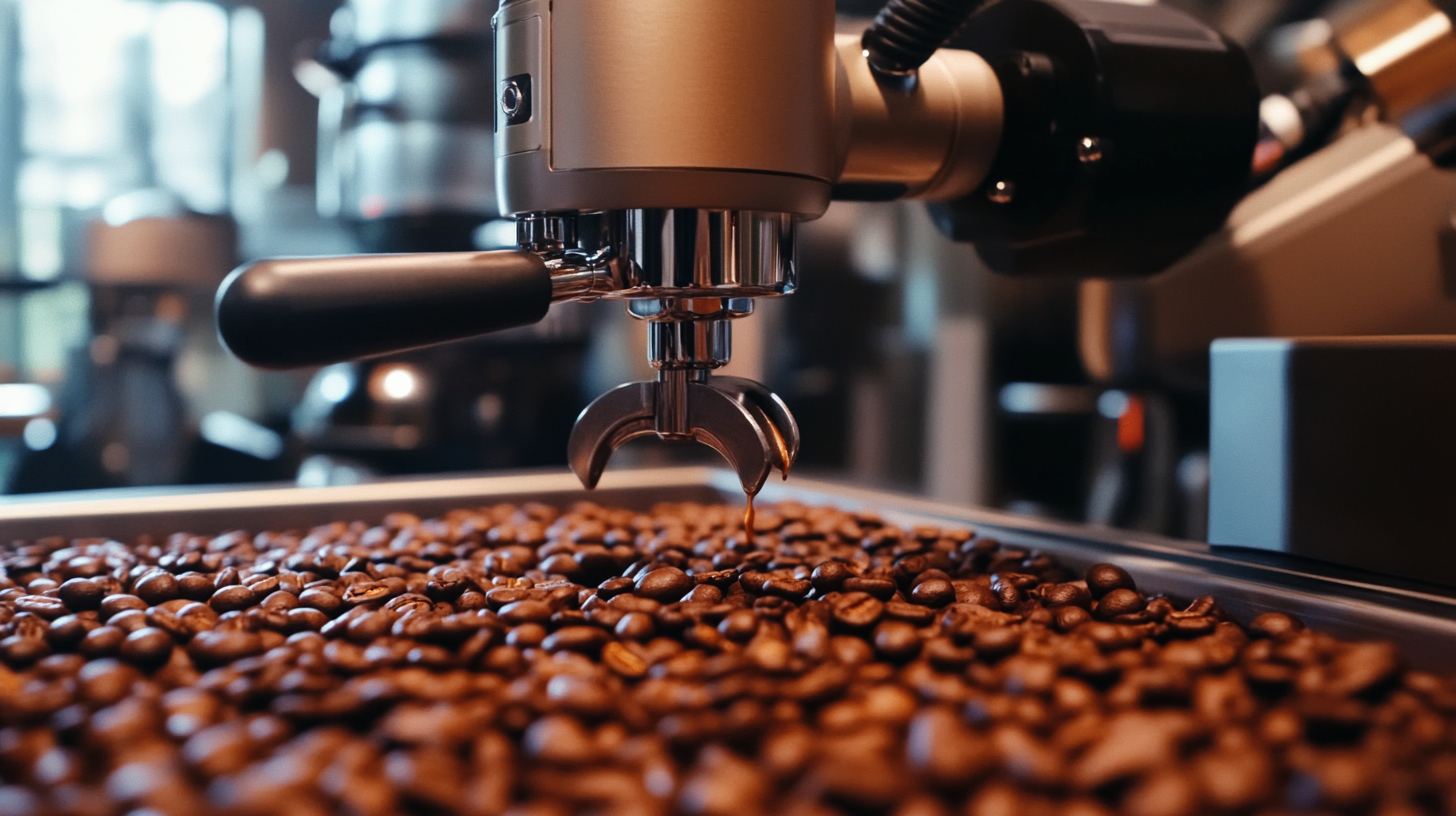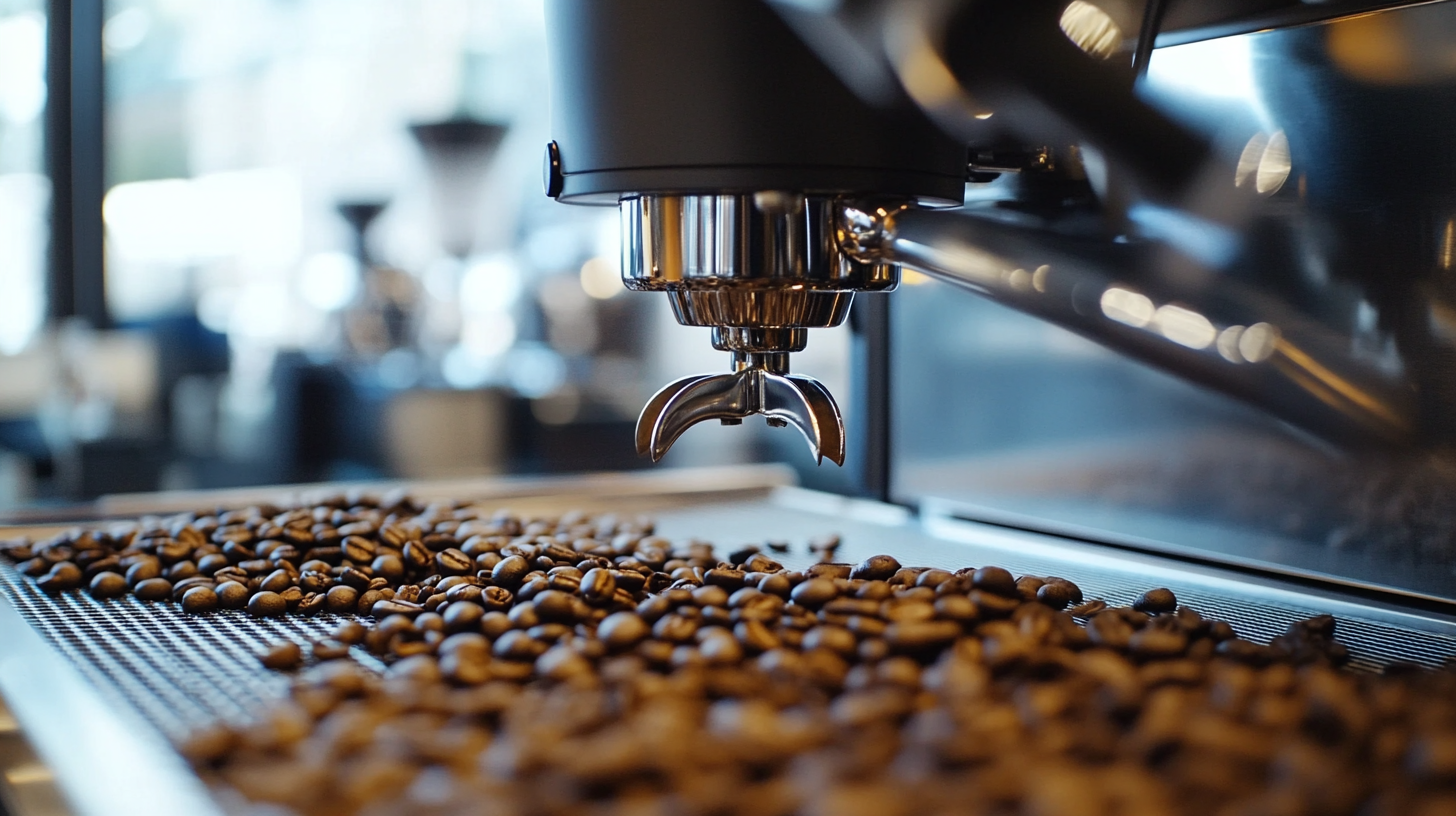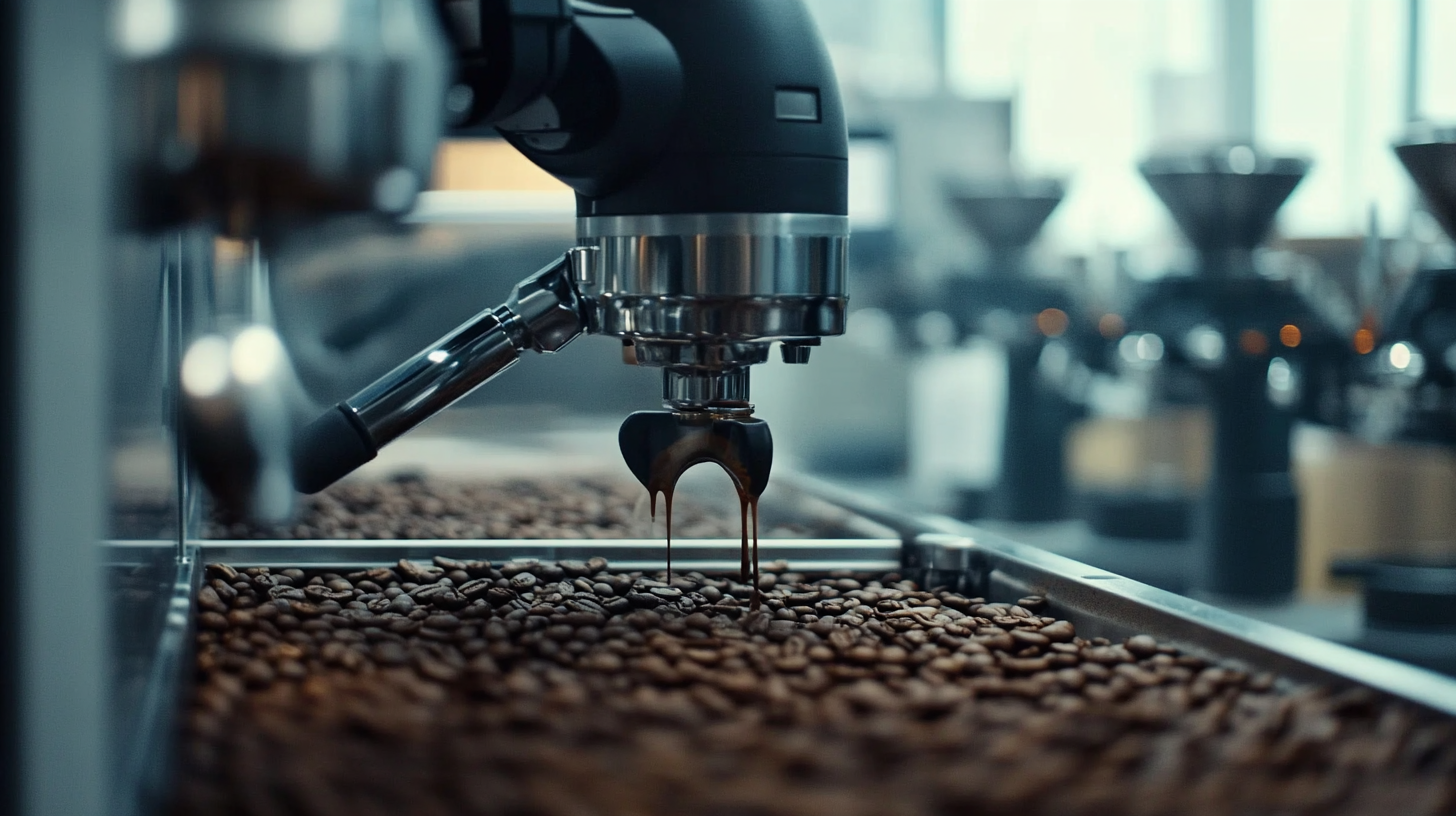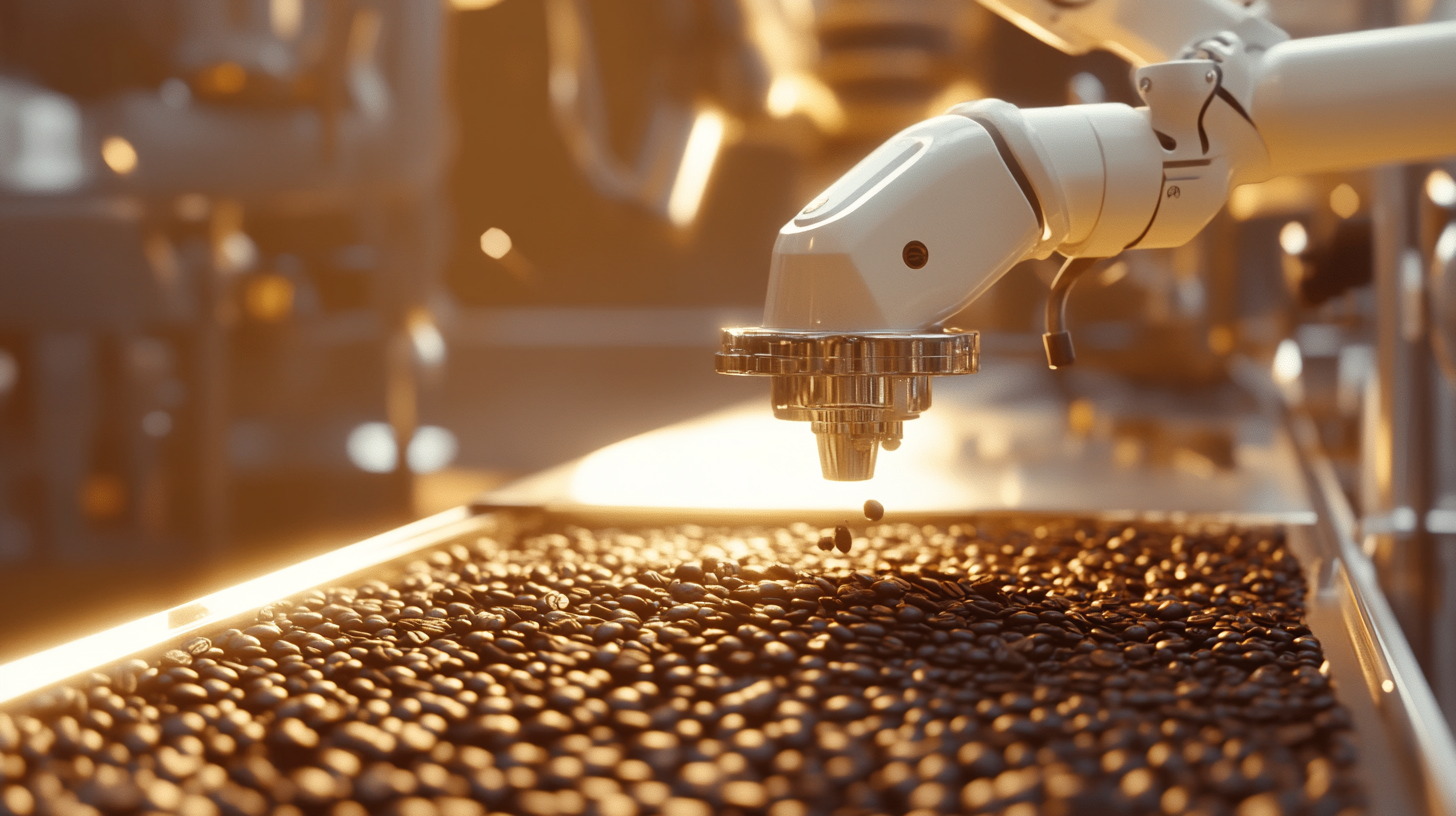Future Innovations in Coffee Making Robots and Their Impact on Global Coffee Production
They train you until October 2023.
The coffee industry is at an inflection point today, necessitating technology and automation. During the past few years, high consumer demand has escalated coffee production, and the International Coffee Organization (ICO) reports that world coffee consumption during the 2021-2022 coffee year exceeded 167.55 million 60-kilogram bags by its source. As the industry meets rising requirements for quality, consistency, and efficiency, Coffee Making Robots are poised to play crucial leading roles in the chain of coffee production. Not only is brewing simplified by these technologies, but the process gains even more precision to promise coffee connoisseurs an experience worthy of the finest cup after each brewing.
In addition, this innovation of Coffee Making Robots in cafes and commercial spaces is likely to redefine coffee brewing in a great deal. Allied Market Research reveals coffee machines market will go up to $6.4 billion by 2027 and automation technology shall be a major contributor towards end of the estimation period. This is promising, for as Coffee Making Robots become increasingly advanced, productivity will increase while labor costs fall, freeing room for coffee producers to focus on sustainability and quality across their businesses. This blog discusses future innovations concerning automated coffee-making processes and their beyond measure implications on world coffee production.

Advancements in Robotics Technology for Coffee Brewing Efficiency
Developments in robotics technology have completely changed coffee brew in one way or another, making what was once far out of reach really come true. By the year 2025, the worldwide coffee market would be worth $102 billion, according to a recent report by the National Coffee Association. It is automation, however, whose roles in satisfying this growing demand are most projected. Brewing robots make the greatest use of machine learning and even artificial intelligence, among other things, not only when determining brewing times but even consistency in flavors and strengths to suit individual consumer tastes. Automated baristas are able to perfectly copy the most exacting techniques of beverage brewing. The International Coffee Organization predicts that this type of technology will be adapted by 30 percent of coffee houses in the next five years, which will dramatically reduce labor costs and improve productivity. Those robots never get tired; the beverages they produce are of the highest quality, in less time, and can usually make all the difference in fast service during peak periods. In addition, this IoT incorporation of capabilities into coffee machines can enable end-users to conduct remote monitoring and maintenance, resulting in reduced downtime and improved reliability. Research from Technavio indicates that the global coffee machine market will increase by more than $2 billion from 2022 to 2026 based on a large array of smart technologies. More than making processes cost-effective, these innovations will also ensure that consumer demands will be met with high precision and efficiency-a future sweet for coffee-in every brewed cup around the world.

The Role of AI in Automating Coffee Production Processes
Effecting artificial intelligence systems into greater and broader applications is redefining the very basis of an industry, and coffee is just one of them. Fortune Business Insights reports that the worldwide coffee machine market is expected to reach $14.67 billion by 2026, with automated coffee making technologies driving the most significant percentages of sales. AI streamlines several functions during coffee processing, from harvesting to brewing and quality control, proving that it can significantly improve efficiency and even quality consistency.
During harvesting, AI-equipped robots, fitted with advanced sensors, can indicate when coffee cherries have ripened, thus allowing for selective picking, thereby reducing waste as only the best quality beans are harvested. According to a study conducted at the University of California, precision agriculture methods, including AI applications, can raise crop yields by as much as 20%, while using 30% less labor cost, a promising development for coffe-farmers nagged by labor shortages.
In addition to this, AI provides the monitoring of growth conditions and predictive capabilities of the optimal time for harvesting. It helps in providing more practical insights into factors such as weather patterns, moisture levels of the soil, and the health of plants. In according to a report by McKinsey & Company, there is an estimated contribution of an added \$1.4 trillion to global GDP for the year 2030 by bringing AI into agriculture, including coffee production, which underlines the investment potential of such innovations.
This means that the end of all these new technologies would be the use of AI in coffee production as that aspect goes beyond becoming a phenomenon, and instead, goes into being part of strategy toward farming that is both sustainable and efficient. It means improved productivity percentages while at the same time maintaining quality. AI-powered robots for coffee brewing will soon be setting the pace in the worldwide market of coffee production, responding to the need for high-demand coffee liveliest in an automation world.

Sustainability: How Coffee Making Robots Can Reduce Environmental Impact
Robots for making coffee are transforming not only the enjoyment of morning coffee but further extending it into sustainability with their application. Since the environmental impacts are growing more serious in demand for technological application in the production of the crop, these are some ingenious alternatives. Coffee-making robots are able to speed up quite a number of stages: anything from harvesting the bean, through to the precision brewing process, is much faster handled than any traditional method.
One more considerable benefit brought in by the robots is resource utilization. In an automated way, the robot controls all variables during the brewing process leading to less wastage: amount of water used, energy expended, etc., thus minimizing the overall carbon footprint of coffee production. In addition, the constant quality of coffee produced by robots means fewer product failures and hence less waste, enhancing an already sustainable supply chain.
On top of that, deploying coffee-making robots perfectly matches the growing consumer inclination toward eco-friendliness. As consumers gain more awareness of their environment, they begin to favor brands that embrace sustainable technologies within their production processes. This elevates the brand image, thus forcing a joint movement toward greener practices in the food and beverage industry. In summary, coffee-making robots consciously put into practice the foresight that will balance the demand with the state of the planet.

Consumer Experience Transformation Through Robotic Baristas
Such automated baristas will completely change the way consumers experience coffee in cafes worldwide, reengineer how coffee is made and served. According to a recent report published by Allied Market Research, the robotic coffee-making technologies will yield a large share in the overall market because the global coffee machine market, which is estimated to reach $12.2 billion by 2026, will be highly dependent on this emerging technology. These machines will be designed not only to best serve the purposes of efficiency but to allow every aspect of the customer experience to be integrated and personalized with an element of consistency as well.
Moreover, robotic baristas brew coffee at exact speeds matched to the growing consumer quality and convenience demand. According to the study of the National Coffee Association, at least sixty-four percent of Americans consume coffee daily, most exploring new taste experience. Robotic systems can readily change their patterns when these consumer behaviors shift in preference by having brew options from single origins to "whatever you like" milk frothing, while making sure to keep limited waits during those few peak hours.
Like making any other field part and parcel of day-to-day life, robotics have taken coffee making to such an extent. An interactive customer experience can be integrated by the coffee-making robot having AI. It would encourage customers to order items using mobile-device applications or touchscreens, and hence the consumer experience from ordering until drinking will be seamless. This will also improve customer satisfaction and provide to the coffee industry essential information regarding client preferences, allowing for more targeted marketing and product improvements. Moreover, this is the change in technology introducing further magic regarding custodians building coffee into people's lifestreams even further.
Global Coffee Trade: Economic Implications of Automation in Coffee Making
In recent years, the entire coffee trade has been on the verge of a revolution with high tides of automation in coffee making. Unprecedented effects on economies arise as robotics and artificial intelligence penetrate deeper into the coffee production process. The promises of automation come with great efficiencies and consistency toward solving the problems faced by traditional coffee growers, namely: lack of labor, fluctuations in quality, and the like. In a situation where robots can take care of rather cost-intensive jobs-harvesting and brewing-the production cost for coffee manufacturers will dramatically decrease, allowing them to scale their business models and enhance the profit margin.
Yet, it is not all straightforward. Even as it might increase the productive capacity, the displacement of labor in coffee-growing regions presents critical dilemmas. In most country's economies, coffee farming remains the key driver, with thousands of workers relying on this industry for their livelihoods. The advent of automated processes would only deepen such socio-economic disparities, especially in developing regions where conservative job outlets may start drying up. Hence, it would be important to associate possible updates to global coffee production with strategies that weigh technology against workforce sustainability.
As these innovations unfold, the coffee trade is also set to change its globalization. Lower production costs may enable producers to compete on an international pricing front-but how automation technology providers relate with coffee farmers will dictate the outcome of this game. The truth is that coffee-making robots could change not just global coffee production but also the architecture of global coffee commerce.